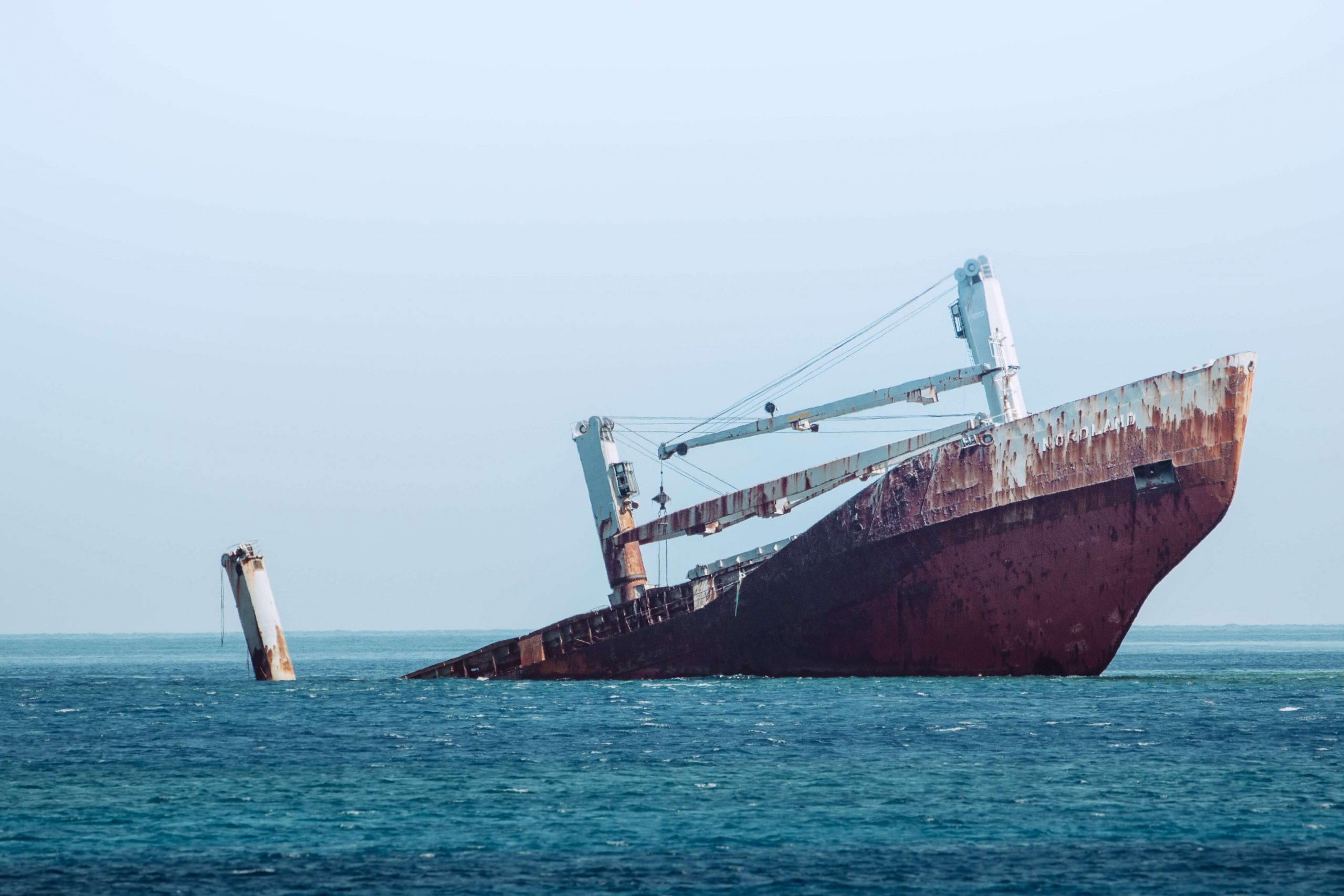Wreck and Salvage Law in Singapore
INTRODUCTION
The law of wreck and salvage in Singapore is one that has constantly been evolving. Singapore has recently accessioned to the International Salvage Convention. In May 2020, Senior Minister of State for Law Edwin Tong outlined proposed changes to wreck and salvage law in Singapore. These amendments will place traditional salvage claims on the same footing as special compensation claims.[1] This will incentivise parties to minimise environmental damage when engaging when carrying out salvage operations. The amendments are aligned with changes that other important maritime jurisdictions such as Australia and the United Kingdom have made.
The law of salvage has always been an integral part of the maritime industry in Singapore. Singapore owes its early existence to its strategic location between the Indian Ocean and the South China Sea, making it an attractive route for mariners because of its deep-sea harbour and sheltered shores.
The law of salvage is based upon principles of equity and it refers to the act of rescuing or saving a vessel and its cargo from danger at sea even though there is not prior contractual or legal obligation to do so.[2]
There are four elements that support a finding of pure salvage under traditional salvage law.[3] Firstly, the property has to be maritime in nature.[4] Secondly, the property has to be in marine peril.[5] Thirdly, the salvage effort has to be successful.[6] Lastly, the salvor must not have been under a pre-existing legal duty to perform the salvage.[7]
With the recent discovery of the RMS Empress of Asia, an armed merchant cruiser utilized during the Second World War which sank off the coast of the Sultan Shoal Lighthouse in Singapore in 1942, it is apposite to take stock of the current state of the law, which raises substantial legal issues in relation to salvage, towing and disposal operations.
THE LEGAL REGIME IN SINGAPORE
There are seven (7) material statutes governing wreck law in Singapore, namely: –
a) The Merchant Shipping Act (the “MSA”);
b) The 1996 Protocol to the Convention on Limitation of Liability for Maritime Claims (“LLMC 1996”) (implemented via Section 136 of the MSA)
c) The Prevention of Pollution of Sea Act (“PPSA”), which empowers the Maritime and Port Authority of Singapore (“MPA”) to take preventive measures against pollution;
d) The Merchant Shipping (Civil Liability and Compensation for Oil Pollution) Act 2008 (“MSCLCOPA 2008”), which addresses liability for oil pollution;
e) The Merchant Shipping (Civil Liability and Compensation for Bunker Oil Production) Act, which covers bunker oil pollution (“MSCLCBOPA”);
f) The Merchant Shipping (Wreck Removal) Act 2017 (“MSWRA 2017”) giving the force of law to the Nairobi International Convention on the Removal of Wrecks 2007 and;
g) The Preservation of Monuments Act (“POMA”) which gives certain powers to the National Heritage Board (“NHB”) to identify and preserve monuments of artistic or symbolic significance.
(I) When does a ship become a wreck?
Section 145 of the MSA states that a wreck consists of “jetsam, flotsam, lagan and derelict found in or on the shores of the sea or any tidal water.”
(I) Who is the receiver?
Section 146 of the MSA states that “the Authority shall have the general supervision of all wrecks in Singapore”.
The relevant Authority is the MPA established under the Maritime and Port Authority of Singapore Act 1996[8]. The MPA may appoint a wreck receiver. Any party that is not the owner of a shipwrecked vessel must deliver the vessel to the appointed wreck receiver as soon as it is possible.
(II) What can the receiver do to a wreck?
Section 161 of the MSA states that “ Where any ship is sunk, stranded or abandoned within the territorial waters of Singapore but outside the limits of any port in such a manner as, in the opinion of the receiver, to be or to be likely to become an obstruction or danger to navigation, the receiver may —
(a) take possession of, and raise, remove or destroy the whole or any part of, the ship;
(b) light or buoy any such ship or part until the raising, removal or destruction thereof; and
(c) sell, in such manner as the receiver thinks fit, any ship or part so raised or removed, and also any other property recovered in the exercise of his powers under this section, and out of the proceeds of the sale reimburse himself for the expenses incurred by him in relation thereto under this section, and he shall hold the surplus, if any, of the proceeds in trust for the persons entitled thereto.”
However, where the wreck is so badly damaged and is not recoverable, or if its value does not exceed $1,000, then the MPA can sell the wreck immediately[9].
(III) Can Owners lay claim to wrecks?
Section 156 of the MSA states that the Owner of any wreck may establish his claim to the wreck to the satisfaction of the MPA within one month from the time at which the wreck came into the possession of the MPA. Upon paying the salvage fees and expenses due, the Owner is entitled to have the wreck or the proceeds thereof delivered up to him.
(IV) What happens to wrecks discovered outside of territorial waters and subsequently brought to Singapore?
Although there have been not been any Singapore cases to date, presumably where the ship has sunk outside of territorial waters, personal property of passengers will, although the salvor has the duty to deliver the wreck to the receiver, belong to the salvors in the absence of the true owners.
(V) What happens to unclaimed wrecks
Section 159 of the MSA provides that the MPA after being in possession of any unclaimed wreck for a month can sell the wreck. The proceeds of the sale after deducting the expenses incurred by the sale, by the MPA and salvors fees goes into a Consolidated Fund.
(VI) Limitation of Liability for wrecks
Section 136 of the MSA gives the force of law to the LLMC 1996 with effect from 29 December 2019.
Article 2(1)(d) of the LLMC 1996 states that “claims in respect of the raising, removal, destruction or the rendering harmless of a ship which is sunk, wrecked, stranded or abandoned, including anything that is or has been on board such ship” are subject to limitations, save for salvage claims under Article 3 This is subject to Article 2(2) which states that if there is a contract with the person liable for the wreck, then the limits of liability do not apply.
The limits of liability, as per Article 6, are set in the table below as follows:-
Claims for loss of life or personal injury
Tonnage (GT) |
LLMC 1976 (SDR) |
Tonnage (GT) |
LLMC 1996 (SDR) |
| < 500 | 333,000 | – | – |
| 501 – 3,000 | 333,000 + 500/ton over 500 | <2,000 | 3,020,000 |
| 3,001 – 30,000 | 1,583,000 + 333/ton over 3,000 | 2,001 – 30,000 | 3,020,000 + 1,208/ton over 2,000 |
| 30,001 – 70,000 | 10,574,000 + 250/ton over 30,000 | 30,001 – 70,000 | 36,844,000 + 906/ton over 30,000 |
| >70,000 | 20,574,000 + 167/ton over 70,000 | >70,000 | 73,084,000 + 604/ton over 70,000 |
Other claims
Tonnage (GT) |
LLMC 1976 (SDR) |
Tonnage (GT) |
LLMC 1996 (SDR) |
| < 500 | 167,000 | <2,000 | 1,510,000 |
| 501 – 30,000 | 167,000 + 167/ton over 500 | 2,001 – 30,000 | 1,510,000 + 604/ton over 2,000 |
| 30,001 – 70,000 | 5,093,500 + 125/ton over 30,000 | 30,001 – 70,000 | 18,422,000 + 453/ton over 30,000 |
| >70,000 | 10,093,500 + 83/ton over 70,000 | >70,000 | 36,542,000 + 302/ton over 70,000 |
With the implementation of the LLMC 1996, Singapore is now on par with other jurisdictions such as the United Kingdom and Hong Kong when it comes to wreck claims. This is considering that a party will usually study the relative limitation limits as well as any risk or chance of breaking limitation before deciding on a jurisdiction to set up a limitation fund which is favourable for them.
Additionally, the implementation of the LLMCis likely to promote Singapore as the preferred choice of governing law of commercial shipping contracts and attract more claimants to utilise the Singapore International Commercial Court (SICC), the Singapore Chamber of Maritime Arbitration (SCMA), the Singapore Institute of Arbitration (SIAC) and the Singapore Mediation Centre (SMC).
HAZARDOUS EFFECTS OF WRECKS AND ACTIONS TO REDUCE THEM
This update will focus on the recently enacted MSWRA 2017 instead of the MSCLCOPA 2008 and the MSCLCBOPA which has been in force for some time.
(I) What is the MSWRA?
The MSWRA recognises the potential danger that wrecks pose to safe navigation at sea and to the marine environment, and seeks to provide a legal basis for the prompt and effective removal of such wrecks from Exclusive Economic Zones of member states and for the payment of compensation associated with the costs involved.
The MSWRA requires owners of ships over 300 GT to take out insurance or provide other financial security to cover the costs of wreck removal to the limits of liability under the applicable national or international limitation regime.[10] All Singapore registered ships and those calling the port of Singapore will now be required to carry on board a ‘Wreck Removal Convention Certificate’ (“WRCC”) to attest that insurance or other financial security to cover liability for wrecks is present.[11]
Vessels registered in a State which is not a party to the Convention but which perform voyages to countries which are parties to the Convention must obtain a certificate from a State party
Singapore-registered ships that are currently holding valid WRCC issued by other recognised State parties are not required to apply for WRCC from MPA until prior to the expiry of their existing WRCC
The MPA has issued a Shipping Circular dated 16 August 2017 (No. 13 of 2017) informing the public of the WRCC requirement in Singapore on 8 September 2017 and setting out the procedures to be taken by ship owners who need to procure a WRCC by application to the MPA.[12]
(II) What else does the MSWRA cover?
The MSWRA covers, inter alia, the following areas:
a) Reporting and locating ships and wrecks: covering the reporting of casualties to the nearest coastal state; warnings to mariners and coastal states about the wreck; and action by the coastal state to locate the ship or wreck.
b) Criteria for determining the hazard posed by wrecks, including depth of water above the wreck, proximity of shipping routes, traffic density and frequency, type of traffic and vulnerability of port facilities. Environmental criteria such as damage likely to result from the release into the marine environment of cargo or oil are also included.
c) Measures to facilitate the removal of wrecks, including rights and obligations to remove hazardous ships and wrecks, which sets out when the shipowner is responsible for removing the wreck and when a state may intervene.
d) Liability of the owner for the costs of locating, marking and removing ships and wrecks. The registered shipowner is required to maintain compulsory insurance or other financial security to cover liability under the convention.
e) Settlement of disputes.
(III) What does it mean for you?
Most international tonnage are already compliant with these requirements. However, if a vessel is not compliant and wishes to call at Singapore, the vessel will need be required to carry a WRCC. All seagoing Singapore-flagged vessels over 300GT will now be required to carry a WRCC, regardless of where they are trading. A failure to comply may lead to fines, detentions and/or criminal sanctions.
HISTORICAL MONUMENTS
Under the POMA, the NHB has the power to, inter alia:-
(a) identify monuments that are of such historic, cultural, traditional, archaeological, architectural, artistic or symbolic significance and national importance as to be worthy of preservation and to make recommendations to the Minister for the preservation of the monuments so identified;
(b) to determine the best method for the preservation of any national monument, and to cause or facilitate the preservation of such national monument in accordance with such method and
(c) to protect national monuments.
There are several ships that have sunk in Singapore Strait, the earliest being the 9th Century Belitung Wreck carrying gold and ceramic cargo. The Nipa Shoal Wreck was also discovered in the 14th Century. Notably, there was also the 15th Century Bakau Wreck and the 17th Century Binh Thuan wreck.
CONCLUSION
It is inevitable with the advent of modern underwater exploration techniques, the number of shipwrecks discovered in Singapore and her neighbouring waters are bound to increase. Over the last two decades, legal issues in relation to ship arrests and conflict of laws have arisen[13]. With the constant evolution of wreck and salvage laws, this is certainly an area which will definitely not be rendered archaic.
[1] Channel News Asia, “Edwin Tong on High Court (Admiralty Jurisdiction) (Amendment) Bill, https://www.channelnewsasia.com/news/parliament/videos/may/edwin-tong-on-high-court-admiralty-jurisdiction-amendment-bill-12770760 (Accessed 2 August 2020).
[2] Gard, “Salvage and wreck removal from a P&I Club perspective” https://www.gard.no/web/updates/content/51949/salvage-and-wreck-removal-from-a-pi-club-perspective#:~:text=Introduction,1 (Accessed 2 August 2020).
[3] Joseph Sweeney, An Overview of Commercial Salvage Principles in the Context of Marine Archaeology, 30 J. Mar. L. & Com. 185, 189(1999).
[4] Ibid.
[5] Ibid.
[6] Ibid.
[7] Ibid,192.
[8] Merchant Shipping Act (MSA) (Cap 179, 1996 Rev Ed) s 2
[9] MSA (1996) s 157
[10] Merchant Shipping (Wreck Removal) Act 2017 Art.12
[11] Captain Ganasen, “Maritime and Port Authority of Singapore Shipping Circular to Shipowners” No. 13 of 2017 (16 August 2017) <https://www.mpa.gov.sg/web/portal/home/port-of-singapore/circulars-and-notices/shipping-circulars/detail/4672936a-edb2-4f4b-987d-de278725f7b6> accessed 2 August 2020.
[12] Ibid.
[13] See for instance Treasure Valley Group Ltd v Saputra Teddy and another (Ultramarine Holdings Ltd, intervener) [2006] 1 SLR(R) 358 and Rickshaw Investments Ltd and another v Nicolai Baron von Uexkull [2006] 2 SLR(R) 850
Contributed by:
Peter Doraisamy
Group Managing PartnerChambers & Partners – Asia Pacific 2023
PDLegal LLC is pleased to announce that Managing Partner, Peter Doraisamy, has been recognised and ranked by Chambers & Partners (Asia Pacific 2023 for Shipping: Domestic: Litigation). The following quotes appear with Peter’s ranking: –
“Peter Doraisamy of PDLegal in Singapore is a noted shipping lawyer in the market. He handles a wide range of disputes, including ship grounding, cargo and fraud-related cases” – Chambers & Partners – Asia Pacific 2023
“He is excellent in litigation. He has very good control of the case, collecting the right evidence and putting this into a very successful trial.” – Shipping Litigation Client
Chambers and Partners is the leading independent professional legal research company operating across 200 jurisdictions. Chambers and Partners delivers detailed rankings and insights into the world’s leading lawyers and law firms.
This ranking is a testimony to the expertise and experience of the Firm’s shipping practice and would not be possible without the support of our clients and friends.
View All Awards

We’re here to help you.
Whether you're seeking advice, representation, or have general inquiries, we're here to help. if you would like to speak to us for more information, please contact our client services team who will be happy to assist.
Let's Get In Touch
Our Office
- A:
PDLegal LLC Advocates & Solicitors 1 Coleman Street #08-02 The Adelphi Singapore 179803
- E:
- T:
- F:
(65) 6220 0392
- H:
Mon - Fri : 9:00 am - 5:00 pm Sat : 8:30 am - 12:00 pm











